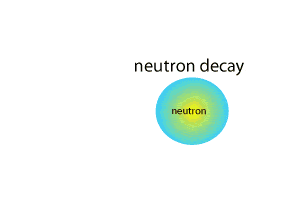One way neutrinos are produced is during a neutron decay. In fact, it was through a careful study of this type of radioactive decay that physicists hypothesized the neutrino's existence. In fact the prediction of the neutrino and its subsequent discovery is a fine example of how science works through observation, hypothesising investigating and predicting to build upon current understanding.
In 1931 Wolfgang Pauli hypothesised the existence of the neutrino. After observations of certain radioactive decay he noticed that energy and momentum did not appear to be conserved. Newtons laws of conservation of energy and angular momentum, put forward over two centuries before, were not obeyed. Pauli suggested that this missing energy might be carried off, unseen, by a neutral particle which was escaping detection. In 1959 a particle fitting the expected characteristics of the neutrino was discovered. This neutrino is later determined to be the partner of the electron. Since then 2 other types of neutrinos have being discovered, the muon and the tau.
Below is what Pauli observed.
In a radioactive nucleus, a neutron at rest (zero momentum) decays, releasing a proton and an electron.
Because of the law of conservation of momentum, the resulting products of the decay must have a total momentum of zero, which the observed proton and electron clearly do not.
Therefore, we need to infer the presence of another particle with appropriate momentum to balance the event.
Experiments have confirmed that this is indeed what happens.
